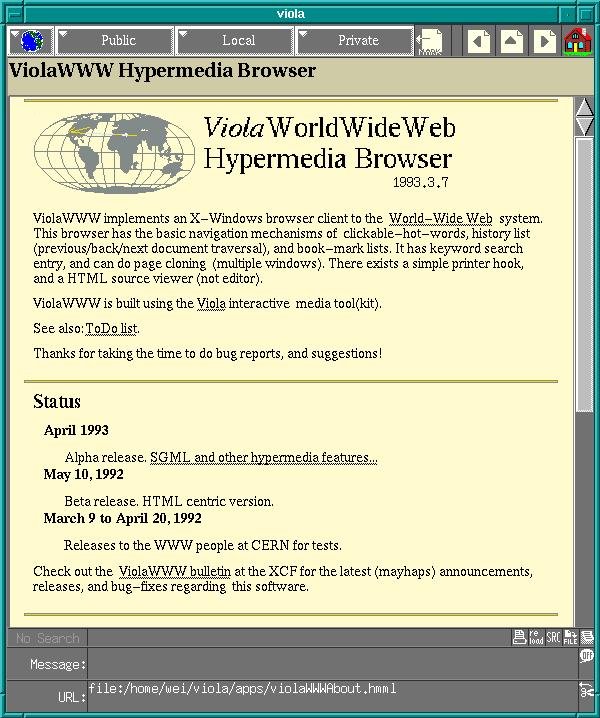How the web slowly is developing into a platform for creating apps
It has taken more than two decades for the web to evolve in to a platform suitable for creating web apps. Some frontend developers, the ones who creates the user interface that runs in the browser, have been talking about frontend fatigue because of all the the things happening in frontend development. Actually the web evolves quite slowly. Single page applications, like gmail was not that common only 10 years ago. If you go 15 years back, most web applications were using server side rendering with just a little bit of sparkle of javascript for added effects. Most pages used HTML tables for layout. This month Firefox released the Firefox Quantum that has developer tool that displays a timeline of animations on a page made with css.
Early 1990s
Even if I had played around and created some simple webpages, it was not until 1995 I started making websites professionally. I remember installing a webserver on a Unix workstation for the first time in 1992. The browser was called Viola, and was the best you could get before NCSA released the Mosaic browser. Viola was really slow and the few pages around didn't impressive anyone. The preferred tool for creating apps for Mac back then was Hypercard, or the compatible alternative SuperCard. The apps used a simple tcp/ip library to communicate with backends you could write in Perl. Hypertext was implemented simply by putting underlined text on a page and make it clickable. It has been pointed out before it is pure a coincidence that the world started using HTML, CSS and JavaScript to create most of the worlds apps. If Apple computers had made HyperCard public domain, then history may have looked very different.
Mid 1990s
The only way to write HTML in 1995 was to litter the code with with font tags and HTML tables. It would took 9 years before I created a site that used CSS float instead of HTML tables for doing layout. It wasn't a lack of interest in CSS that caused me to wait for so long. One of the users of my HyperCard apps was another guy also living in Oslo called Haakon W. Lie. He would later on create CSS. It had similarities with something called DSSL created for SGML, that would later on be replaced with XML.
It wasn't until three years ago when I started writing apps using React, that I felt I had a stack that was better then the old HyperCard stack I used 25 years ago. And it wasn't until this month I found a tool for displaying the timeline of CSS animations, that I thought was almost as good as the timeline tools available in Macromedia Director and other development tools.
Early 2000s
The web was not intended to be a platform for creating apps. It was not until year 2000 that Microsoft made it possible for a web browser to communicate with the server without doing a full page reload when it created the XMLHttpRequest API Few used javascript because of all the problems with different web browsers. After jQuery was released in 2006, JavaScript became more common. Angular was released in 2009. React was open sourced in 2013. Babel became popular later and made it possible to write readable JavaScript code.
The 2010s
The development of API's and standards used in web browsers takes years to be accepted by W3C. Lately standards like CSS flexbox has been worked out by W3C and adapted more quickly than it used to. Still, the development takes time.
The use for a platform for downloading and running light applications has proven the test of time. It has withstand competition from native apps written for desktops or mobile apps. The UX of tomorrow may look like Microsofts Hololenses, thinner and lighter tablets or something completely else. The need for instantly running downloading and running light applications like web browsers do, will still be there.


